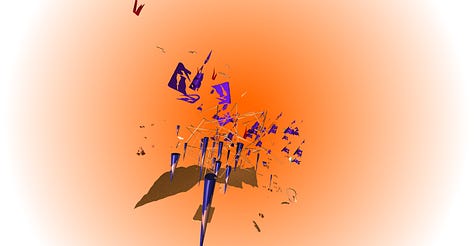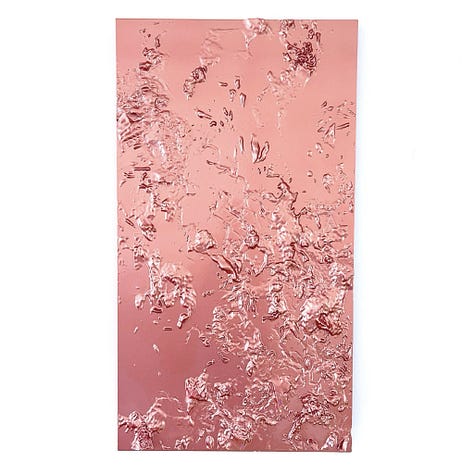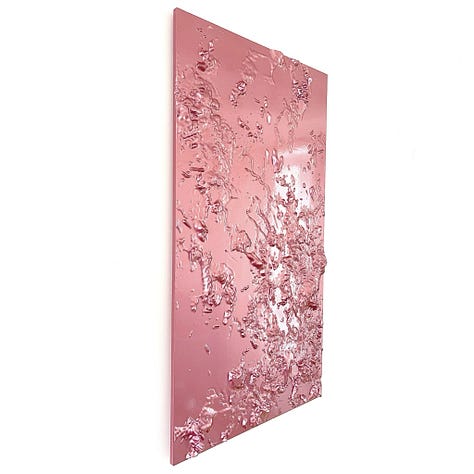There seems to be a problem with digital abstract art. For many encountering the medium from another artistic field, a similar issue comes up. The problem is when they look at digital abstract art, all they can see is technology.
For viewers used to painterly surfaces or physical sculptures, encountering a digital artwork is like visiting an alien world – one where the aliens are more technologically advanced than you. The objects and textures are strange and there’s something cold at the heart of it.
In our lives most of us experience digital media as noise. A never-ending flow of new information that washes over us. As a result, digital abstraction finds it hard to escape the perception that it’s regurgitating a familiar and unwanted state.
It’s easy to empathise with this interpretation. If all you see in front of you is patterns or objects designed by computer, it’s a small jump to assume the artwork is trying to tell you something about technology. Or it has nothing to say at all.



A lot of recent abstract painting, in the post-conceptual framework or whatever you call it, has an easy to recognise contemporary formalism. With these carefully-considered pieces, the materials and process used to construct an artwork are often one and the same as its meaning.
A contemporary painter or sculptor might borrow from the media, technology, manufacturing or other sources. The process and materials guide an interpretation, because those things literally make up the artwork. But the primary medium is painting or sculpture.
The act of integrating media or technological artefacts into a painterly composition marks them as worthy of attention. In recent gestural abstraction, the brushstrokes of the artist are read as inherently human and the painter’s hand can play against any ‘imported’ elements. The juxtaposition of techniques transforms the raw material.
But an abstract artwork composed entirely from digital techniques fails to pull off the same trick. No matter what’s included in the production of the abstract piece, it ends up being read as a technological architecture. It can’t escape the overwhelming influence of its medium, for some viewers.
Digital figuration doesn’t have this problem. Many artists using the digital medium in the gallery world incorporate figurative elements. Human bodies and characters are introduced into digital scenarios and narratives, to generate the required juxtaposition with the digital.



Why do we need visual cues that designate ‘human’ or ‘painting’ to read a digital piece as something other than technological? Maybe much of the art world just suffers from Luddism. Technology has to be the straw man, because it isn’t well-understood.
A problem with digital abstraction is visual aesthetics. The geometry of an abstract painting is balanced by the surface texture of the paint, whether as a digitally-constructed piece doesn’t achieve that same feeling. Digital abstracts can be bright and shouty, or cold, empty and unrelatable.
The effects of technological power structures on people are a part of it. But those same technologies can be used by artists to subvert or upend authority in different ways. Digital abstraction might not overtly signpost its politics or the location of the human in the space of the artwork, but that doesn’t mean those things aren’t ever there.
I’ve been creating abstract networked artworks for years. Some are relational pieces which include the people viewing them, by tracking their online behaviour. I also work with AI to produce abstract landscapes that reveal the models’ inner perceptual process. There is definitely an alienating aspect to these works, but this is just part of the human perceptual experience I’m working towards.
Most new media formats encounter resistance from viewers, mostly because it’s easy to reject what we don’t understand. I prefer to dig into these new things as they appear and try to see what’s going on. Maybe I’m just a nerd.
Artworks are, among other things, a product of their relations. They exist between people and can draw participants into new relationships. In the end, solving digital abstraction will probably come down to artists. It’s not enough to say something is there, but it can be put where people will find it.



